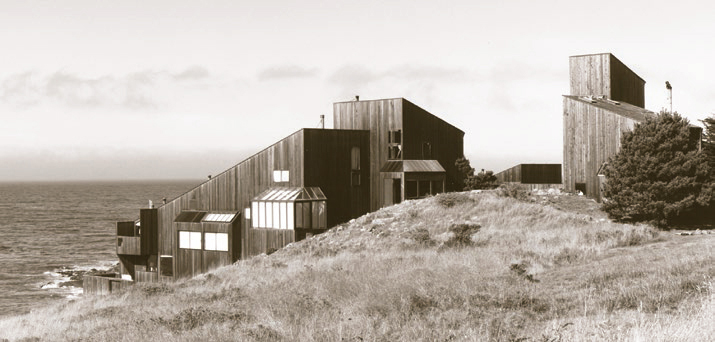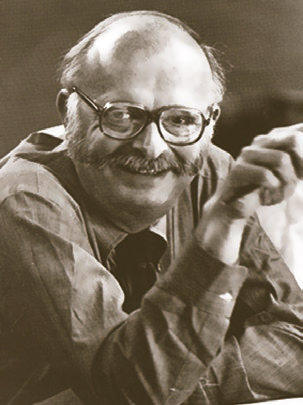8 Great Modern Masters - Page 9
 |
|
|
 |
|
|
|
|
|
|
8. CHARLES MOORE
First Bay Tradition architects were known for having fun with their buildings. Ernest Coxhead, back in the 1890s, mixed and mingled styles and elements in a quirky way.
Moore (1925-1993), whose houses have been called "antic," "arcane," and "whimsical," did the same several generations later, as he helped turn the Second Bay Tradition into the Third Bay Tradition.
Wonder what a Third Tradition house looks like? Just picture the houses at Sea Ranch on the northern Sonoma Coast.
Moore, from Michigan and with a Ph.D. from Princeton, worked for several Bay Area architects in the late 1940s, including Joe Stein, and truly became a Californian in 1959 when he began teaching at UC Berkeley. He designed compact wooden houses that had even smaller houses inside them. He called these smaller houses—they were really framed areas held up by columns—'aediculae,' a Roman term for shrines.
Soon Moore and colleagues in the firm Moore Lyndon Turnbull and Whitaker were, along with his fellow professor at Cal, Joe Esherick, producing the first homes at Sea Ranch.
They were barnlike, abstract in composition, boxlike, with 'side saddles' attached to handle such things as bathrooms and closets. Rather than rambling horizontally, like Second Tradition models, they often went up, vertically.
Moore's designs at Sea Ranch included small homes that seemed large because of double-height living areas and double-height glass walls. They had complex plays of space, and beds installed atop the aedicule.
Moore, who went on to lead the architectural school at Yale, pioneered in his later years what came to be called post-modern architecture.
This was an architecture that dropped the idea that borrowing architectural flourishes from past centuries was bad. Instead, it glorified these things, borrowing as a form of intellectual pastiche. Highrises with Chippendale-style tops, casinos shaped like the New York skyline, and hundreds of strip malls with fake 19th century storefronts gave the style a bad name.
But Moore himself produced some delights, high among them his zany 1978 Piazza d'Italia in New Orleans, with its burnt-orange Corinthian columns, red pilasters, archways, and fountains.
No architect associated with the Bay Tradition has proven more influential nationally and internationally than Moore.
Meanwhile, in Sea Ranch, architects are still building Third Bay style. And if you're hankering to sleep in an aedicule, Moore's own condo, furnished with his art collection, can be yours for the rental.
Photography: Ernie Braun, Roger Sturtevant, Roy Flamm; and courtesy Environmental Design Archives - University of California, Berkeley (the collections of Donald Olsen; Henry Hill and John Kruse; William W. Wurster/Wurster, Bernardi & Emmons; William Turnbull, Jr./MLTW); Bancroft Library - University of California, Berkeley; Oakland Museum of California (Roger Sturtevant Collection - Gift of Roger Sturtevant); Roddy and Roger Lee; Dan Funk; Pierluigi Serraino




